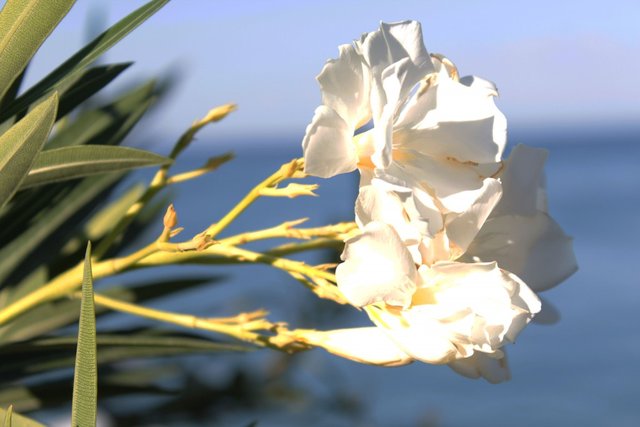RE: Oleander - Beautiful but Deadly.
The story of oleander flowers, the symbol of romance and charm, is described in Greek mythology: The young man named Leander swims every night to face the young girl sitting on the opposite bank of the Greek Sea (Marmara) and see him. Again in a stormy september, Leander, who is burning with the love of his lover, leaves herself in horny waters. Leander, unable to withstand the violence of the storm, is about to arrive on the opposite shore and is dead from exhaustion in the dark waters. The horny waves leave the inanimate body of the flock to the white sands, struggling to see once again their love. Seeing this, the young girl puts the oleander flowers he collects for his lover into Leander's lifeless body.
Since that day, oleander flowers have embellished as the symbol of Leander's endless love.
The common name of the oleander, called "oleander" on many foreign languages, comes from Leander, who is strangled to see his love. In our country, it is also known as the tree-tree, the tree-tree and the tree of the struggle. You know the phrase "the roots of my stomach." (For example, the expression "eat the roots of my fortune", which is often used by mourning mothers for meals!) The "wreck" here is actually the zakkumun itself. Oleander, a very poisonous plant, was also used as a potent poison in ancient times. Because of this feature, in some regions it is still known as "killing donkey".

Picture source
Some very interesting info here, and great pics! You won the Silly Sausage Award, well done !
thank you.. :)